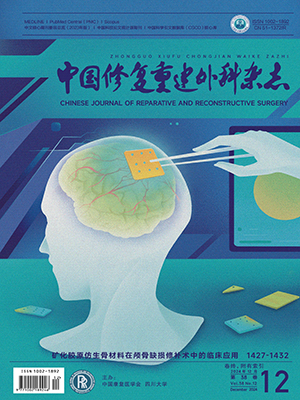OBJECTIVE: To sum up transplantation of free scapular flap to repairing injury of faciocervical region, 103 cases in past 16 years were reviewed. METHODS: The scapular flap contained the ascending, descending, and transverse branches of the circumflex scapular artery. The range of the flap was as following: across the scapular spine to the acromion in upper edge, to the level of anterior iliac spine in lower edge, to the bilateral middle axillary line in both sides. RESULTS: The clinical result was good. Fifty eight cases were followed up for 3 months to 10 years, the function of the faciocervical region was recovered with satisfied contour. In part of the patients, a second-stage operation was performed to make the flap thinner. CONCLUSION: The maximal range of the flap can be 45 cm x 16 cm. For its sufficient blood supply, it should be of no influence on survival of the flap if the window is open in suitable site. Because of its large range of donating region and sufficient blood supply, it is fit for children.
Citation: LI Yang qun,XU Jun,LI Sen kai. TRANSPLANTATION OF FREE SCAPULAR FLAP TO REPAIRING INJURY OF FACIOCERVICAL REGION. Chinese Journal of Reparative and Reconstructive Surgery, 2000, 14(4): 205-207. doi: Copy
Copyright © the editorial department of Chinese Journal of Reparative and Reconstructive Surgery of West China Medical Publisher. All rights reserved




